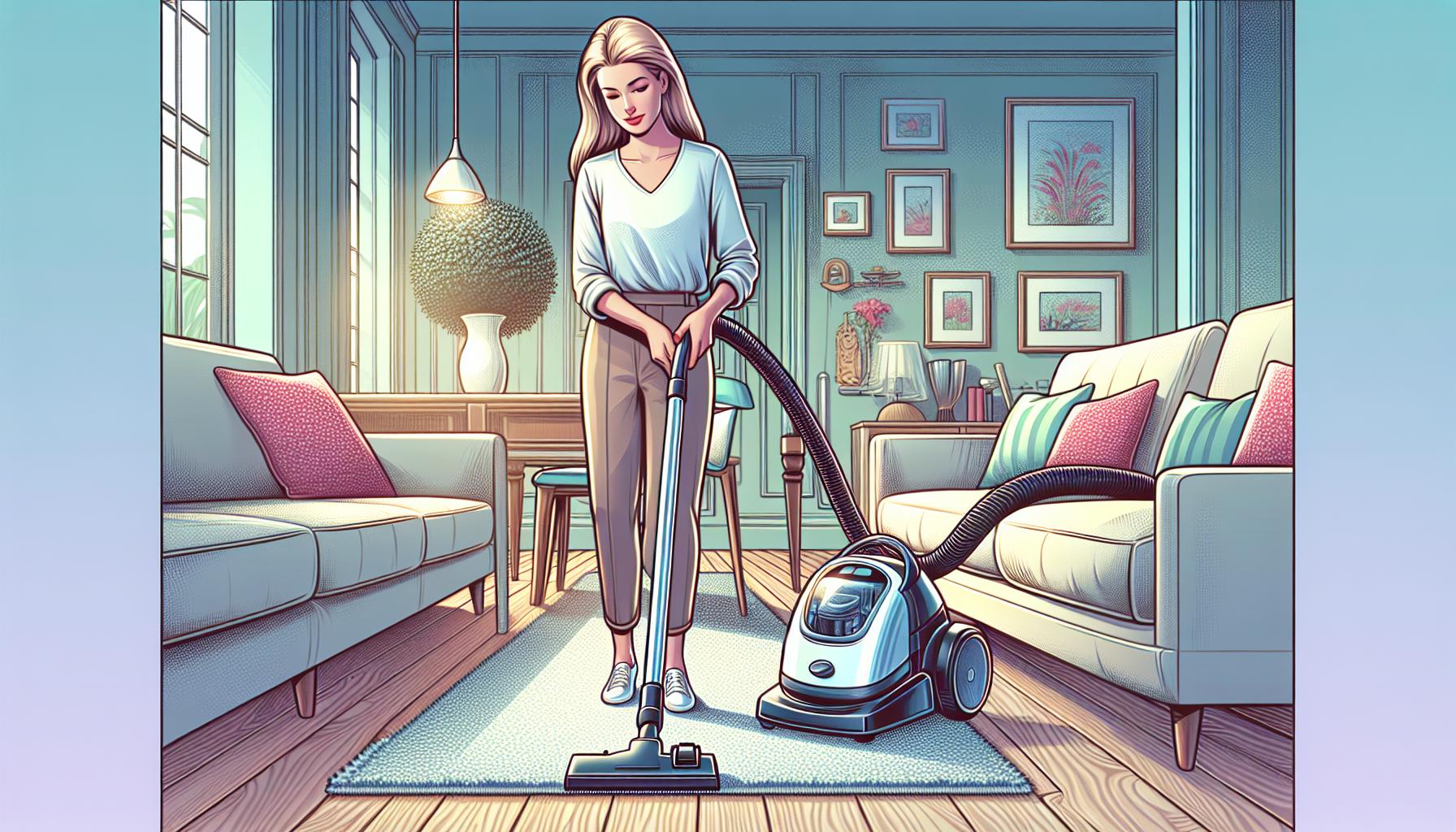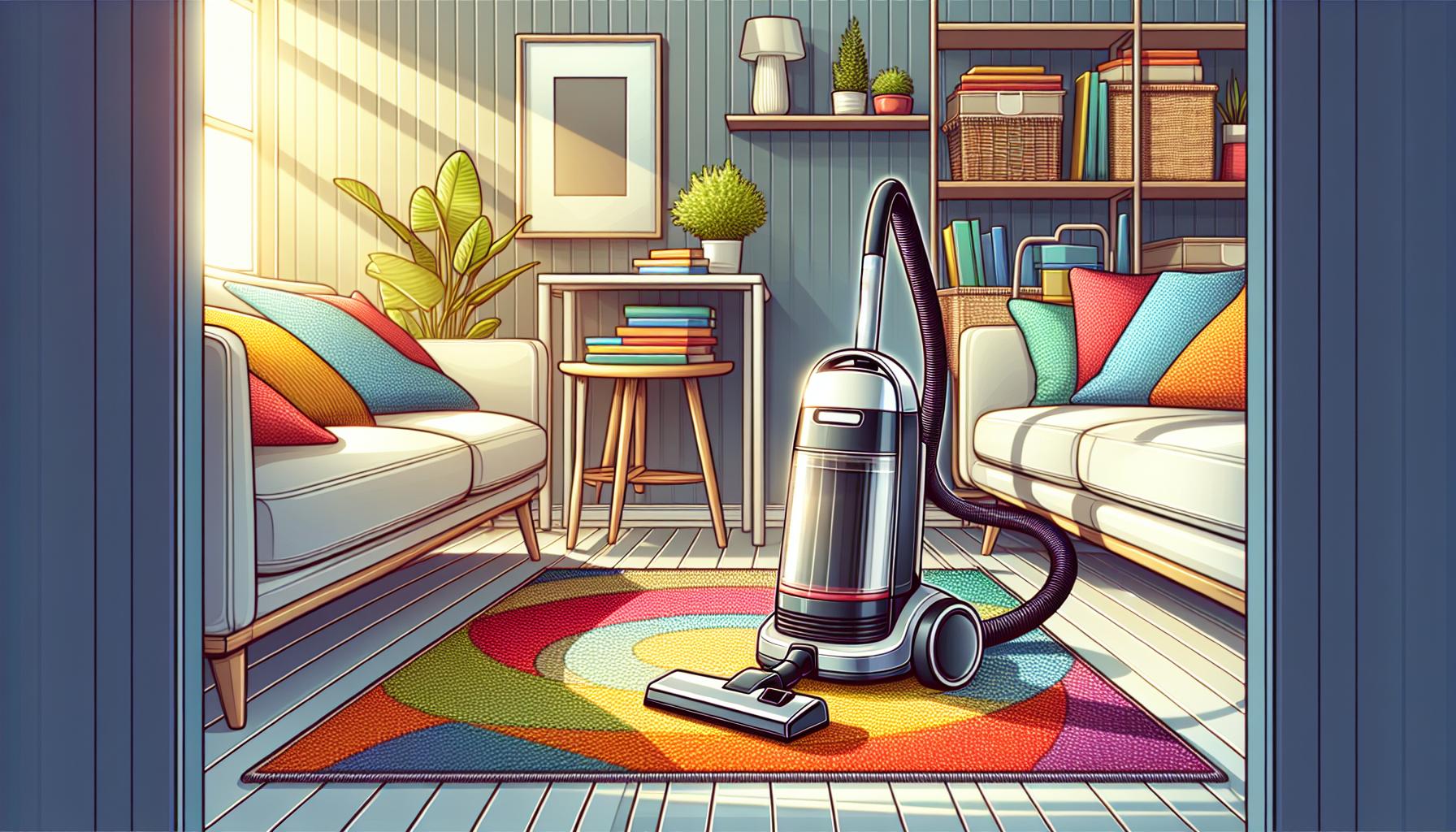Have you ever wondered how people kept their homes clean before vacuum cleaners? It’s hard to imagine a time when dust and debris were tackled without the push of a button or the hum of a motor. The invention of the vacuum cleaner wasn’t just about convenience—it was a response to a growing need for cleaner, healthier living spaces in a rapidly industrializing world.
As cities expanded and homes filled with carpets and upholstery, traditional cleaning methods like sweeping and beating rugs weren’t cutting it anymore. Dust wasn’t just a nuisance; it posed health risks, especially in urban areas where pollution was on the rise. The vacuum cleaner emerged as a game-changing solution, revolutionizing how people approached cleanliness and hygiene. But why exactly was it invented, and what drove its creation? Let’s delve into the story behind this essential household device.
The History Of Cleaning Before The Vacuum Cleaner
Cleaning methods before vacuum cleaners relied heavily on physical effort and basic tools. Tasks like maintaining dust-free homes were challenging and time-intensive.
Traditional Cleaning Methods
People used brooms, dustpans, and manual carpet beaters to remove dirt and dust. Sweeping was employed for hard surfaces, while rugs were taken outdoors and beaten with paddles to dislodge debris. Feather dusters were common for high shelves and smaller items, although they often redistributed dust into the air. For upholstered furniture, brushes and cloths were used to clean surfaces manually.
Limitations Of Early Cleaning Techniques
These manual processes lacked efficiency and thoroughness. Sweeping stirred up dust into the air, posing respiratory health risks. Rug beating required significant physical exertion, making it inaccessible for people with limited strength or time. Dust accumulation in inaccessible areas limited cleaning effectiveness, especially in homes with intricate decor.
The Inspiration Behind The Invention

The vacuum cleaner originated from a practical need to address emerging hygiene challenges in urban environments. Shifting lifestyles and health awareness played a pivotal role in its development.
Growing Urbanization And Hygiene Needs
Rapid urbanization during the 19th and early 20th centuries resulted in denser populations with close-proximity living conditions. Homes featured heavy carpets and upholstered furniture, which accumulated dust and dirt over time. These factors heightened the demand for effective cleanliness solutions to tackle health risks associated with airborne particles and allergens. Industrial advances provided the resources to meet these hygiene needs on a larger scale.
Challenges That Sparked Innovation
Traditional cleaning methods failed to keep pace with evolving residential demands. Sweeping stirred up dust rather than removing it, spreading allergens into the air. Rug beating required significant physical strength and was impractical in urban settings with limited outdoor space. The manual process of cleaning was labor-intensive and time-consuming, often leaving surfaces inadequately sanitized. These limitations motivated inventors to pursue mechanical solutions capable of enhancing efficiency and hygiene standards in modern homes.
Why Was The Vacuum Cleaner Invented?

The vacuum cleaner was invented to address growing hygiene concerns and improve cleaning efficiency in modern households. It offered a practical solution to challenges posed by traditional cleaning methods.
Addressing Health Concerns
The vacuum cleaner emerged as a direct response to health issues caused by dust and airborne particles in homes. During urbanization, densely populated cities faced increasing exposure to allergens and debris from carpets, rugs, and furniture. Traditional cleaning stirred up dust, exacerbating respiratory problems. The vacuum cleaner minimized these risks by effectively removing contaminants without dispersing them back into the air.
Reducing Labor And Time For Cleaning
Maintaining clean homes required significant effort before the vacuum cleaner. Tasks like carpet beating and sweeping were labor-intensive and time-consuming, limiting accessibility for individuals with demanding schedules or physical constraints. The vacuum cleaner simplified these processes, dramatically reducing time and energy needed for household cleaning while increasing accessibility for a wider population.
Enhancing Efficiency In Household Maintenance
Efficiency in cleaning became crucial as urban homes featured more dust-attracting materials like upholstery and heavy curtains. Manual tools struggled to achieve thorough cleanliness, leaving gaps in hygiene. The vacuum cleaner addressed these gaps by providing a mechanized solution, consistently delivering superior cleaning results. This innovation set new standards for household maintenance, making cleaner and healthier living environments attainable.
Key Innovations In Early Vacuum Cleaners

The evolution of vacuum cleaners marked a shift from rudimentary manual tools to efficient powered devices. Innovations in design and technology were pivotal in shaping their transformation.
Manual Designs To Powered Models
Early vacuum designs relied on manual operation. An example is Daniel Hess’s 1860 “carpet sweeper,” which used rotating brushes and bellows to create suction. These manual devices required significant physical effort, limiting their appeal. Mechanical improvements led to portable, crank-operated models, such as Melville Bissell’s 1876 carpet sweeper, which efficiently removed dust without electricity.
The advent of powered models began with Hubert Cecil Booth’s 1901 “Puffing Billy.” This large, horse-drawn vacuum used an external gasoline engine to create suction. Soon after, James Murray Spangler’s 1908 electric suction sweeper presented a more compact, motorized solution. Spangler’s invention revolutionized cleaning with handheld portability, a dust collection bag, and an electric fan design, setting the foundation for modern vacuum cleaners.
Role Of Technology In Shaping Modern Vacuum Cleaners
Innovations in technology significantly influenced vacuum cleaner designs. The introduction of electric motors in the early 20th century simplified operation and improved suction power. Manufacturers like William Henry Hoover refined Spangler’s design, adding advanced filtration systems and durable components. Hoover’s 1926 “beater bar” innovation combined suction with agitation to improve cleaning performance.
Post-World War II advancements, including lightweight materials and improved motor designs, increased efficiency and accessibility. Modern innovations like HEPA filters, cordless technology, and robot vacuums, such as the 2002 iRobot Roomba, reflect continuous improvements in reliability and ease of use. Enhanced technology enabled vacuums to meet diverse needs, from household uses to industrial cleaning applications.
The Impact Of The Vacuum Cleaner

The vacuum cleaner revolutionized cleaning routines by introducing mechanized efficiency and improved hygiene. Its influence extended beyond households to industrial and commercial spaces.
Transforming Domestic Life
Vacuum cleaners streamlined home cleaning by reducing physical labor and time. Before their invention, tasks like sweeping or beating carpets were labor-intensive and inefficient. Early electric models allowed individuals to clean carpets, upholstery, and floors more thoroughly, improving air quality and reducing health risks from allergens and dust. Over time, features like beater bars, disposable dustbags, and lightweight designs made vacuums more user-friendly and accessible.
Efficient cleaning methods in the home freed up time, enabling families to focus on other activities. Compact and portable designs catered to diverse living spaces, making them indispensable household tools. Modern advancements like robotic vacuums added convenience, offering automated cleaning to fit busy schedules, further transforming domestic spaces.
Influence On Industrial Cleaning Practices
Vacuum cleaners advanced cleaning in industrial and commercial settings by enhancing productivity. Factories, offices, and healthcare facilities adopted powerful, large-scale vacuum systems to manage vast spaces and heavy debris. Early innovations like central vacuum systems provided permanent installations for continuous cleaning in large buildings.
Specialized industrial models addressed unique needs, such as removing hazardous materials or fine particulates in manufacturing processes. HEPA filtration technology minimized contamination risks, especially in environments like cleanrooms or medical facilities. These advances underscored the vacuum cleaner’s crucial role in maintaining professional hygiene standards across industries.
Conclusion
The invention of the vacuum cleaner marked a pivotal moment in the evolution of cleanliness and hygiene. It transformed cleaning from a labor-intensive chore into an efficient, accessible process, addressing the growing demands of modern living. By integrating technology with practicality, vacuum cleaners not only improved household maintenance but also set new standards for health and convenience.
From their humble beginnings to the advanced models we use today, vacuum cleaners continue to adapt to our changing needs. They remain a testament to human ingenuity, proving how innovation can simplify everyday life while enhancing overall well-being.
Frequently Asked Questions
What inspired the invention of the vacuum cleaner?
The vacuum cleaner was inspired by the growing need for effective cleaning solutions in urbanized environments during the 19th and early 20th centuries. Traditional cleaning methods like sweeping and rug beating were inefficient and posed health risks due to airborne dust. Urban homes with carpets and upholstery demanded a mechanized solution to improve cleaning efficiency and hygiene.
How did traditional cleaning methods fall short?
Traditional cleaning methods, such as using brooms and manual carpet beaters, often stirred up dust instead of removing it, increasing respiratory health risks. These methods required significant physical effort and time, making them impractical for urbanized households with heavy carpets and dense furnishings.
Who were some key inventors of the vacuum cleaner?
Daniel Hess invented a manual “carpet sweeper” in 1860, and Melville Bissell improved upon it in 1876. Hubert Cecil Booth introduced the first powered vacuum, “Puffing Billy,” in 1901, and James Murray Spangler designed an electric, portable vacuum in 1908, which later evolved under William Henry Hoover.
What innovations did early vacuum cleaners introduce?
Early vacuums evolved from manual tools to powered machines. Hubert Cecil Booth’s 1901 “Puffing Billy” provided strong suction, while James Murray Spangler’s 1908 model introduced electric suction and portability. William Hoover’s enhancements, such as disposable dustbags and beater bars, significantly improved functionality.
How did vacuum cleaners transform home cleaning?
Vacuum cleaners revolutionized cleaning by reducing the physical effort and time required to maintain a dust-free home. They removed contaminants more effectively, improving air quality and hygiene. Features like lightweight designs, disposable bags, and motorized brushes made them practical for everyday use.
What impact did vacuum cleaners have on industrial cleaning?
In industrial settings, vacuum cleaners improved efficiency by addressing unique needs, such as removing hazardous materials or cleaning large industrial facilities. Advanced models with HEPA filters ensured safety by trapping fine particles, making them valuable tools in industries like healthcare and manufacturing.
How have vacuum cleaners evolved over time?
Vacuum cleaners have transitioned from heavy, manual tools to lightweight, electric-powered devices with advanced features like HEPA filters, cordless designs, and robotic automation. Modern models are more efficient, portable, and versatile, catering to diverse household and industrial cleaning needs.
What role does technology play in modern vacuum cleaners?
Technology has introduced innovations like HEPA filtration, robot vacuums, and cordless operation, making vacuums more efficient and user-friendly. Features such as powerful motors, smart sensors, and improved battery life have enhanced cleaning performance, reliability, and ease of use.
Are vacuum cleaners essential for maintaining a healthy home?
Yes, vacuum cleaners are essential for maintaining a healthy home. They effectively remove dust, allergens, and particles from carpets, furniture, and floors, reducing health risks and improving indoor air quality. Their efficiency saves time and effort, making them a practical household tool.
What are the benefits of HEPA filters in vacuum cleaners?
HEPA filters trap fine particles, allergens, and dust, preventing them from being released back into the air. This improves indoor air quality, making HEPA-equipped vacuums ideal for homes with allergies, asthma, or pets, as they promote a cleaner and healthier environment.
